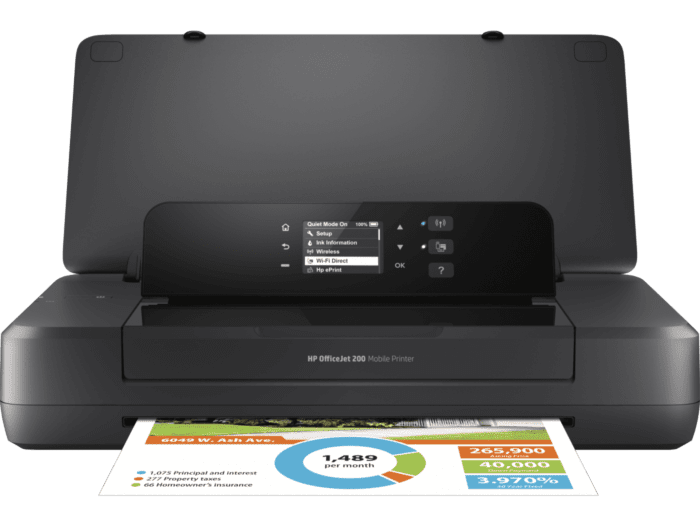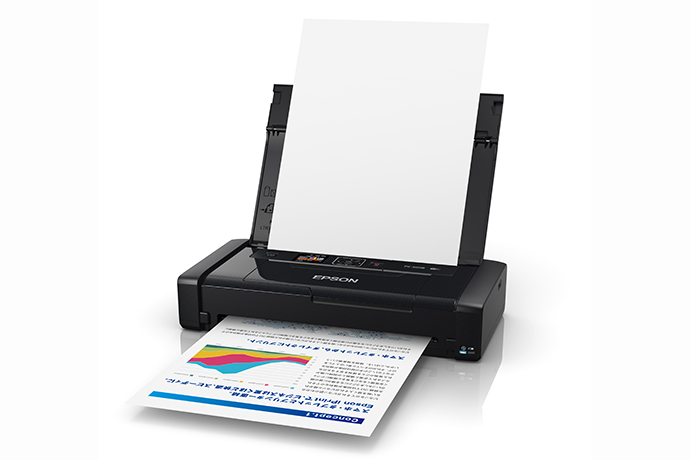Navigating the World of Portable Printing: Comprehensive Insights Into Mobile Printers
Introduction
In a world that is constantly on the move, the ability to print documents from anywhere has become an essential tool. Mobile printers have made portable printing a reality, revolutionizing different industries and everyday work processes. This article provides a comprehensive insight into mobile printers, including what they are, how they differ from traditional printers, their features, benefits, and how to choose the best one for your needs. It should serve as a handy guide to anyone who's considering investing in mobile printers.
What are Mobile Printers?
Mobile printers are a leap forward from conventional printers, offering convenience and flexibility in today's fast-paced environment. Here's a quick overview:
- Definition: Mobile printers are compact, wireless printing devices designed for on-the-go printing. They can print documents and images anywhere, providing immediate access to printed materials.
- Functionality: These printers work in collaboration with smart devices such as smartphones and tablets, using technologies like Wi-Fi or Bluetooth, enabling direct printing from user's devices.
- Portability: A key trait of mobile printers is their small size and lightweight design, ideal for travel and outdoor work. You can easily fit them into a backpack or a carry-on bag.
- Variety: Mobile printers vary in overall size, weight, and functionality, catering to unique requirements of different industries or individual professionals.
Explore the world of mobile printers and enhance your productivity, irrespective of where you are!
Why are Mobile Printers Different from Traditional Printers?
Mobile printers and traditional printers, despite sharing the same essential function - printing, stand worlds apart. The unique features of mobile printers not just make them different but also superior in multiple ways:
* Mobility: Mobile printers are designed for portability. With no cords or wires to hold them back, they bring the convenience of printing to any location, making processes more efficient and user-friendly.
* Seamless Integration with Mobile Devices: Traditional stationary printers require a PC for operations, but mobile printers work in harmony with mobile devices. They connect via Wi-Fi or Bluetooth, enabling users to print directly from their smartphones or tablets.

* Compact and Lightweight Design: Mobile printers are constructed to be compact and lightweight, making them the ideal travel companion for business professionals or field workers. This design feature significantly distinguishes them from the bulky, stationary traditional printers.

* Remote Printing: Unlike traditional printers, mobile printers support remote printing through their connectivity with cloud-based applications. You can easily send print commands, even when you're not physically close to the printer.
To sum up, mobile printers leverage technological advancements to provide a printing solution that's mobile, lightweight, and compatible with other devices. They also offer the convenience of remote printing. These elements create a profound distinction between mobile printers and their traditional counterparts, heralding a revolution in the way we perceive and utilize printers. They may share a basic function, but the capabilities of a mobile printer go well beyond those of a traditional printer.
What is the Role of Mobile Printers in Various Industries?
Within numerous sectors, mobile printers have become indispensable assets in streamlining workflows and enhancing service efficiency. By offering onsite printing capabilities, they are transforming the way businesses operate. Let's delve into how these innovative devices are contributing to varying industries through some noteworthy examples:
- Retail Industry: Mobile printers come to the rescue in bustling retail environments by facilitating instant printing of price tags, receipts, and labels. This not only improves customer service but also elevates point-of-sale efficiency.
- Field Services: For professionals always on-the-go, such as technicians or contractors, these portable devices are a boon. From generating immediate reports, invoices, to work orders, mobile printers aid in boosting service quality and productivity.
- Logistics: The logistics sector greatly benefits from the portability of these printers, enabling swift printing of delivery receipts. As a result, operational efficiency is notably increased.
- Healthcare Sector: Healthcare professionals find the use of mobile printers a game-changer for better patient care. They enable quick printing of patient records, prescription labels, and more, improving data management and service efficacy.
The integration of mobile printers in these industries represents just a fraction of their expanding utility. Overall, they are valuable tools that help businesses stay efficient and competitive by allowing instant documentation from anywhere, thereby proving their worth in today's fast-paced professional landscape.
What are the Features and Benefits of Mobile Printers?
Mobile printers come loaded with an impressive array of features, engineered to offer flexibility, efficiency, and convenience. Let’s delve into some of these standout specs:
* Connectivity: Mobile printers use Wi-Fi or Bluetooth to connect with Laptops, smartphones or tablets, enabling remote printing even from a significant distance.
* Compact size: Mobile printers are designed to be lightweight and compact, offering unrivaled portability. Owing to their size, they can easily fit into a backpack or suitcase, making them perfect for those constantly on the move.
* Speed and Efficiency: Despite their compact design, mobile printers do not compromise on printing speed. They offer quick output, saving you precious time in high-pressure situations or environments.
* Diverse Print Media: Mobile printers can handle a variety of print media. From regular paper to labels and receipts, these printers showcase impressive versatility.
* Battery Life: These printers typically come with a commendable battery life. Many models even have rechargeable batteries, adding to their convenience level.
After understanding these key features, let's shed light on the numerous benefits that accompany mobile printers:
* Accessibility: The direct connectivity to portable devices simplifies the overall printing process and provides remarkable accessibility.
* Productivity Boost: Fast printing speeds, coupled with the ability to print from virtually any location, significantly enhance productivity.
* Time-saving: Mobile printers eliminate the need to rush to stationary printers, saving valuable time and effort, particularly in large workspaces or field settings.
* Instant Printing: The option to print on the spot reduces the risk of forgetting or misplacing important printed documents, adding an element of reliability to your work.
* Cost-effective: Though a mobile printer is an investment, it can prove to be cost-effective in the long run given the high level of convenience and efficiency it provides.
To sum up, mobile printers offer powerful functionality packed in a portable package. By choosing a mobile printer, you commit to convenience, accessibility, and productivity, a triumvirate that is hard to beat in modern work and individual spaces.
How to Choose Your Ideal Mobile Printer: A Helpful Guide?
Selecting your perfect mobile printer necessitates an in-depth analysis of several key factors. This five-step guide will assist you in making an informed decision, ensuring the printer you choose aligns with your needs and offers both reliable performance and optimal convenience.
1. Identify Your Needs: The first step is to understand your specific requirements. Consider the volume of prints you'll routinely need, the locations where you'll use the printer (on-the-go, office, home, etc.), and the types of documents you'll be printing.
2. Printer Specifications: Once you've identified your needs, delve into the technical specifications. Look for features like:
- Print Speed: The time it takes for the printer to execute a print job.
- Print Quality: Examine the resolution (measured in dpi) to ensure it's suitable for your needs.
- Battery Life: Check how many prints the printer can produce on a single charge.
- Connectivity Options: Verify that it can connect to your devices via Wi-Fi, Bluetooth, or another preferred method.
3. Media Compatibility: Mobile printers support various media types like regular paper, labels, or receipts. Pick one that accommodates your preferred media type.
4. Device Compatibility: The printer you select should be compatible with the devices you'll be using, whether it's a laptop, smartphone, or tablet.
5. Price Comparison: Lastly, compare the prices of various models and brands. Look for features against costs to ensure that you're getting the best value for your investment.
In conclusion, a mobile printer can be a powerful tool that offers convenience and boosts productivity. By considering these factors and following this comprehensive guide, you can pick the perfect mobile printer that fits your needs.
Conclusion
Mobile printers have transformed the concept of printing, adding flexibility, convenience, and efficiency to the mix. Whether you're a professional on the go or simply a productivity junkie, a mobile printer is a valuable tool to have. Just ensure you choose the right one aligning with your printing needs to enjoy all its benefits to the fullest.
Related FAQs about what are mobile printers
What are the different types and models of mobile printers?
Mobile printers come in various types, including inkjet, thermal, and photo printers, each serving different needs. Popular models include the HP OfficeJet 250 for all-around use, the Polaroid ZIP Mobile Printer for photos, Epson WorkForce WF-110 for high-quality prints, and the Brother PocketJet PJ763MFI for thermal printing.
How do mobile printers work?
Mobile printers operate wirelessly through Bluetooth or WiFi. They connect with your devices such as smartphones, tablets, or laptops, and receive printing commands. They employ inkjet, photo, or thermal technology to print on various media like standard paper, labels, or receipts.
How have mobile printers evolved over the years?
Mobile printers have significantly evolved, from bulky and inefficient devices to compact, lightweight, and fast printing tools. Advances in technology have led to enhanced battery life, improved printing quality, and the ability to print directly from mobile devices or through cloud-based platforms.


